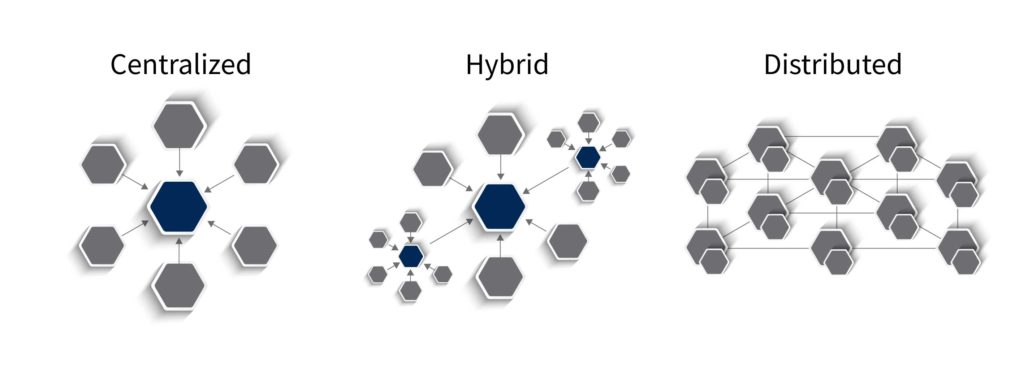Determining which type of architecture to deploy for an IP-based video surveillance system cannot be based upon a one-size fits all approach. It’s important to first understand your customer’s current network limitations and unique video data distribution needs.
This approach is contrary to what many manufacturers indicate today, many of which exclusively promote their architecture method regardless of the project scale, how the video is being consumed or the limitations of the network.
Selecting the wrong type of architecture for a project can prove to be a costly mistake for the systems integrator, especially if a project uses a centralized architecture approach only to find out later that the network infrastructure is not robust enough to filter all the video data into a centrally located data center. Or, if leasing additional fiber lines proves cost prohibitive.

There are three different types of architecture to consider – centralized, distributed and hybrid. A centralized architecture relies upon a server-based system with storage of a SAN or Scale-out NAS. Easily scaled, it delivers the data to a centralized location. However, the challenge is that the cost is often higher and it requires a robust network for systems to work as promised.
Integrators should not overlook a distributed architecture. This approach houses the storage within the chassis. Dependent upon the VMS, a system could hold over 200TB of enterprise storage and offer 2000MBps of throughput. A distributed architecture can provide both tremendous cost and performance benefits.
A hybrid approach offers the best of both worlds, leveraging the storage within the servers and eliminating a single point of failure. It also ensures you have more direct access to archived video and can be scaled to handle future needs.
With the evolution of scalable centralized solutions and a hybrid between centralized and distributed, the network connecting the storage component is more critical than ever. Networks need to deliver high availability and fast convergence in the event that a link or node fails. Unfortunately, not all network switches are created equal.
Today it’s possible to design a mixed solution to leverage the benefits of both architecture types to obtain the desired level of performance and sustained longevity of the system. Together, with the BCDVideo Professional Services Team, we can assist our customers with evaluating, selecting the right architecture and deploying the system for optimal success and value.

